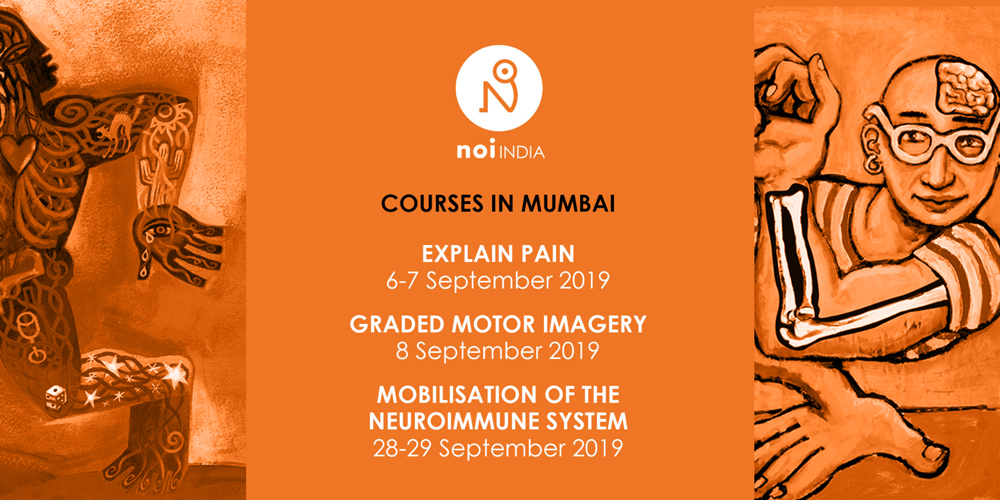We know visualisation has been used in sports to enhance performance, and now visualisation or explicit motor imagery is also an integral part of chronic pain management. However I was pleasantly surprised to find out that there are a number of studies supporting a role for visualisation in enhancing exercise performance.
The first study was by Reiser et al, 2001, where they compared strength gains in three groups – a maximal isometric contraction group, an imagined maximal isometric contraction group and a control group. It was interesting to see that except for the control group both the other groups showed improvement in strength and maintained the improvement for one week post cessation of the exercise program. The second one was by Zijdewind et al, 2003, where they measured plantar flexion torque in a motor imagery training group, a low intensity strength training group and a control group. At the end of the seven week program, the imagery group showed significant increase in plantar flexion torque.
The third study by Lebon et al, 2010 compared strength gains in two groups where one group imagined repetitions between exercise sets and the other group rested only. The imagery group showed higher gains in strengthening compared to the rest group. The most interesting study was by Guillot et al, 2007, where volunteers were just asked to imagine a heavy concentric, light concentric, isometric and eccentric contraction of muscles while EMG electrodes detected activity in agonist, antagonist, synergists and fixator muscles. EMG activity in muscles was proportional to the imagined strength of contraction, with maximum activity recorded for heavy concentric and minimal activity recorded for light concentric. I am not surprised with these findings as we now have studies showing the extent of brain activity during imagined movements.
A bigger role for visualisation in pain management
There is no harm done asking clients to imagine doing the reps between exercises which could, in turn, lead to higher gains in strength compared to just resting between sets! They may need a good explanation though.
We know that initial strength gains from exercises are due to firing of more motor neurons and thus recruitment of more motor fibers that were probably dormant. Visualisation or explicit motor imagery probably targets this mechanism where the motor centres in the brain and thus motor fibers of muscles are recruited, making more motor units fire and thus manifesting as gains in strength. However this cannot suffice for hypertrophy of muscles. This can be useful in the early stages of strengthening and for hypertrophy a lot more physical effort is mandatory. However research regarding the dosage, frequency and intensity is still lacking.
The take home message was that visualisation is a powerful tool that can be utilised to augment strength gains during exercise or during periods of inactivity due to injury/ill-health/immobilisation, however it cannot replace strengthening. It is also a great way to help explain how important the brain and mental processes are in sports and every day life.
I got a chance to discuss this topic again at a conference last month, where I had to discuss the role of brain in pain and motor imagery in rehab to an audience of physiotherapists and orthopaedic surgeons. After my lecture there was an interesting discussion on the role of visualisation in the immobilisation phase. We are aware of the phenomenon of smudging which can happen in this phase. Visualisation or implicit motor imagery can help with homuncular refreshment. Though the role of mirror therapy has been studied in chronic pain and rehabilitation of stroke patients, I was curious to know if there is a role of imagined movements and mirror therapy in the immobilisation stage post-surgery. What if the normal/unoperated limb is “exercised” using mirror therapy during the immobilisation phase post surgery? Will that benefit the limb in sling/cast? Will it help with homuncular refreshment and recruit motor units to the immobilised limb, translating to faster gains in range and strength once the limb is out of cast/sling? We can only hypothesise but there is surely scope for further studies and probably looking at early recovery post immobilisation phase.
Explain Pain and GMI are very powerful tools which have been mostly used in chronic pain management but there is good scope of using this knowledge for enhancing performance even in the absence of pain. If you would like to know more about the role of brain in pain and motor imagery in rehab, please join us on the next EP/GMI course! We have 3 big courses coming up in Mumbai this September and would love to see you there.

Prakkash Sharoff
Instructor for NOI India


Dear Prakkash,
A lovely article and what particularly drew my attention was “EP & GMI are very powerful tools which have been mostly used in chronic pain management”. I think we need to move on and realise that these modalities can and should be used in all pathologies both acute and chronic….
DB London 😎
Can’t agree more David.
How can I order Explain Pain and Graded Motor Imager books please?
how does the passage of time post injury affect the viability of imagery exercises in encouraging both sensory and motor recovery?
Hi Bridget.
As time passes post injury, smudging increases. Hence imagery exercises will surely help in motor recovery. Sensory recovery needs sensory retraining.
You can buy EP and GMI books from https://www.noigroup.com/shop/
And sensory retraining is what your man was doing by smacking his glutes and poking himself with scissors? Surely there are more clinical means of sensory retraining, please describe. Thank you